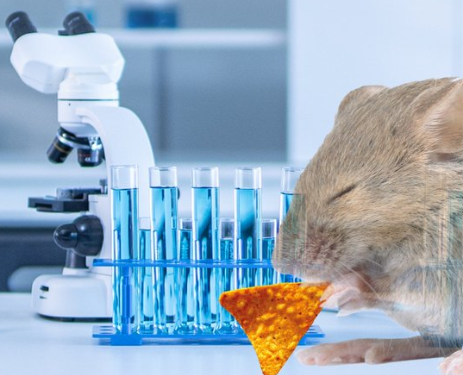Seeing inside the human body has always been a challenge, requiring technologies like CT scans, X-rays, and MRIs, which often come with side effects, such as radiation exposure. But what if you could apply a cream-like substance to the skin and temporarily make it transparent without causing harm? That’s exactly what scientists at Stanford University have achieved in a groundbreaking study, which could have significant implications for diagnostics and medical care.
Scientists at Stanford University rubbed a solution of tartrazine, commonly found in the Yellow No. 5 food dye used in Doritos chips, onto the mice’s skin. After only a couple of minutes, the skin turned transparent. https://t.co/4G6hK0v8UP pic.twitter.com/lQJTUgZT9k
— IGN (@IGN) September 6, 2024
In research published on September 5 in Science, Stanford scientists used a solution containing a common FDA-approved food dye to make a mouse’s skin temporarily transparent. By massaging the dye onto the skin, researchers could visually observe the mouse’s internal organs, such as the liver, intestines, and even the beating heart, without making any incisions. The transparency effect was easily reversed by simply rinsing the skin with water.
This innovative technique leverages a principle of light absorption and scattering. Under normal circumstances, light scatters as it hits the skin, making it opaque. The scattering occurs because of differences in how the skin’s components, like water and lipids, refract light. By applying a dye like FD&C Yellow 5, the light-scattering properties of the skin are altered, making it appear transparent when viewed under certain wavelengths of light. This method is based on well-established physics equations known as the Kramers-Kronig relations, which describe the relationship between absorption and refractive index.
Not only were researchers able to see internal organs, but they could also visualize blood flow in the brain and intricate muscle fibers. This breakthrough is believed to be the first non-invasive method to achieve visibility of living internal organs in an animal. Most importantly, the dye did not cause permanent changes to the skin, and the transparency effect was fully reversible.
The research team, consisting of experts from fields including materials science, neuroscience, biology, and applied physics, sees immense potential in translating this technique to humans. If proven safe, this method could revolutionize medical diagnostics. For example, doctors could visually examine tissue for conditions like melanoma without invasive biopsies, or phlebotomists could find veins for blood draws more easily, reducing discomfort for patients. The technique could also replace some X-rays or CT scans, minimizing radiation exposure.
Scientists at Stanford University have developed a technique that temporarily makes the skin of mice invisible.
pic.twitter.com/iUPIvt8dEM— NewsPoint (@HaberNoktam) September 6, 2024
“This could have an impact on health care and prevent people from undergoing invasive kinds of testing,” said Guosong Hong, senior author of the study. “If we could just look at what’s going on under the skin instead of cutting into it, or using radiation to get a less than clear look, we could change the way we see the human body.”
While the research shows exciting promise, it has only been tested on animals so far. More studies are needed before it can be applied to humans. The team cautions that dyes may still pose risks, and any such applications should be approached with care.
Key Points:
i. Stanford scientists developed a method to make skin temporarily transparent using a food dye, allowing visualization of internal organs without surgery.
ii. The technique works by altering light scattering through skin, enabling researchers to see organs like the liver and heart in live animals.
iii. The transparency is reversible, and the dye doesn’t cause permanent changes to the skin.
iv. Potential applications for humans include non-invasive diagnostics, like melanoma detection and easier blood draws, reducing the need for radiation-based imaging.
v. While promising, this technique has only been tested on animals and requires further research before being used on humans.
Kirk Volo – Reprinted with permission of Whatfinger News

